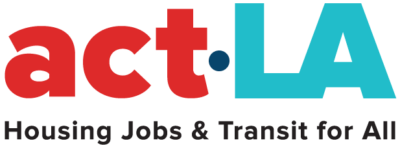Three ways Metro’s police dollars would be better spent
If the Metro board is sincere in its desire to address public safety, it should allocate resources toward programs that actually work. Metro’s Transit Ambassador and mental health outreach programs have been successful. Metro’s costly efforts to police our way to safety have failed. Expanding the programs that have been working will do more to address public concerns than creating a new expensive police force.
Here are three ways that money could be better spent:
Invest $70 to $100 Million in the Ambassador Program
Metro’s justification for police spending is often couched in the claim that police provide a visible presence, making riders feel safer. However, many people, especially the riders of color who constitute the majority of Metro’s ridership, do not feel safer in the presence of police (Black riders are routinely targeted by police and receive the majority of fare evasion citations on Metro).
In contrast, Metro Transit Ambassadors — the unarmed Metro workers who offer riders hospitality, navigation help and connections to social services — have a proven record providing the positive safety presence that riders need. Sixty-three percent of Metro riders surveyed say they feel safer in the presence of ambassadors and ambassadors have saved over 70 lives on Metro in the past year, showing that they are more effective at ensuring rider safety than police. The success of the program is even more remarkable when considering their current budget ($20 million) is just a fraction of the police budget and that they are contracted workers with low pay. Imagine what their efficacy could be with better pay and training!

Metro Board Members Dutra, Mitchell, and Dupont-Walker, Metro CEO Stephanie Wiggins, Compton Mayor Emma Sharif and Compton City Councilmember Andre Spicer stand with Ambassadors and community members at ACT-LA’s Compton Station activation that centered care-based safety strategies in September 2022
Metro has plans to bring ambassadors in-house. We support those plans and recommend budgeting between $70 to $100 million for the program, in order to double the number of ambassadors and expand their coverage to elevators and buses. Additionally, this funding should be used to increase ambassadors’ pay to a housing minimum wage and provide ongoing trauma-informed care training, support systems and professional development opportunities. Creating high-road careers for ambassadors will ensure they feel supported and valued, improving morale so they can continue to engage with riders thoughtfully and allowing them training opportunities to develop skills that will have positive returns for public safety.
Invest $80 to $100M in Mental Health and Homelessness Outreach Budget
Los Angeles is experiencing intersecting mental health and housing crises that often get treated as criminal rather than as the public health issues that they are. Police, including those on Metro, get deployed to address these issues, which cannot be solved through criminalization. The job of police officers is to restrain, cite and arrest people, not to connect an unhoused person or opioid user to the resources or support services they need. Indeed, approximately 40% of police shootings involve someone in the midst of a mental health crisis, demonstrating the violent and inappropriate methods police use with individuals in crisis.
Metro dedicates resources, contracting social service providers including People Assisting the Homeless (PATH) and the Los Angeles County Department of Health Services (DHS), to connect riders to mental health and housing services. However, these programs focus on the rail system only, neglecting buses. Additionally, Metro is not meeting the scale of need; the agency estimates that around 800 unhoused people ride the system nightly, but currently only funds about 150 shelter beds. To address these crises, we recommend that Metro expand these programs’ coverage to buses, invest more money in creating shelter beds, and revive its subsidy for permanent supportive housing for currently and formerly unhoused, similar to Metro’s 2017 MATCH loans. In order to help with recruitment and make sure outreach workers are well supported and valued, we also recommend that Metro increase these workers’ pay to a housing minimum wage.

Outreach workers provide services and resources at the 2022 Compton Station activation
Dedicate $30 to $45 Million for an accessible Public Restroom Program
Metro riders and the media frequently bring attention to the persistent problem of public urination and defecation at stations and stops. These complaints contribute to perceptions of a degraded system and feelings of unsafety; when people feel uncomfortable, they may also feel agitated. The obvious solution to diffuse this safety issue is to create bathrooms for riders’ to address their basic human needs.
Metro is currently partnering with Throne on a restroom pilot that has seen a significant reduction (50%) in urination and defecation at stations where implemented. However, this pilot relies on smart phone technology and acuity with downloading and signing into an app for access, excluding riders with insufficient resources who may need access to public restrooms the most. Furthermore, Metro has numerous bathrooms already at stations, which remain inaccessible to riders.
We recommend that Metro use $30 to $45 million to open its bathrooms to the public and staff them with 24/7 attendants who can periodically clean, restock, and interface with riders.

Riders use restrooms attended by staff at the 2022 Compton Station activation
Want to learn more? Check out these resources:
ACT-LA’s Metro as a Sanctuary Report and One-Pager
ACT-LA’s Op-Ed in the LA Times on Choosing Care-Based Safety over Policing
TransForm Report on Reimagining Transit Safety
To view more from ACT-LA see our blog here.
